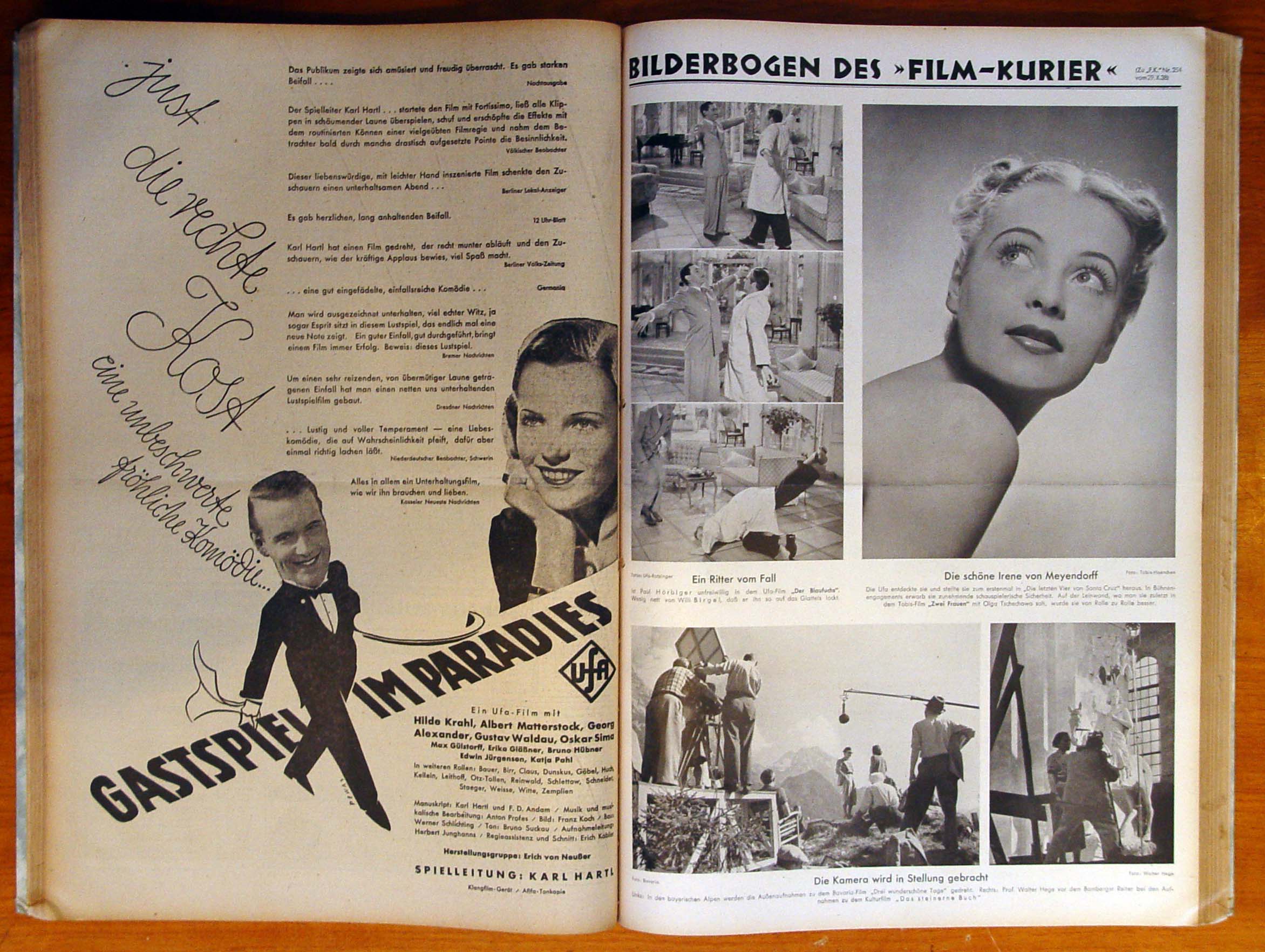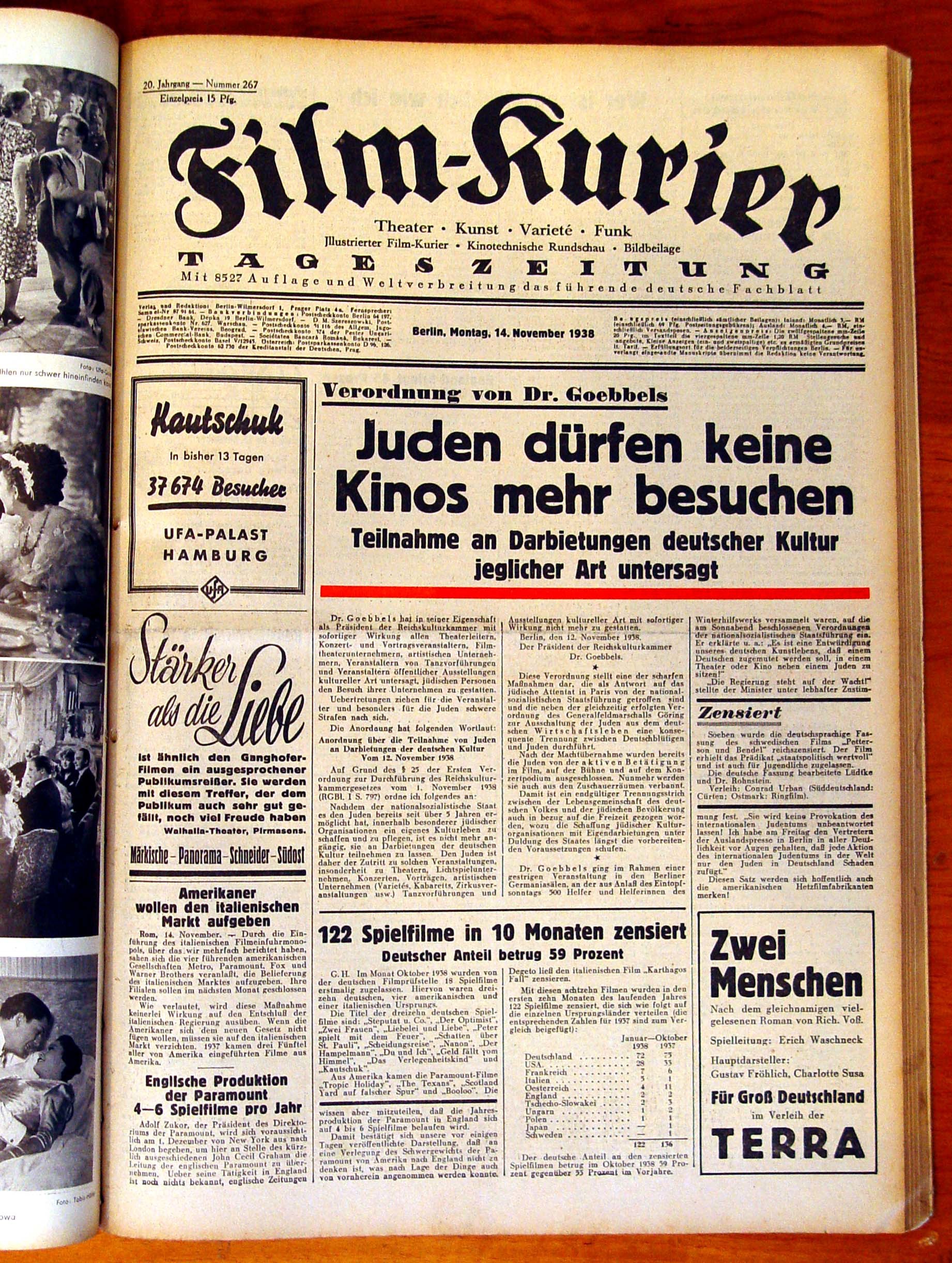Der Film-Kurier: Theater, Kunst, Varieté, Funk, 11 volumes (1935-1940). Over 850 issues of one of the most important trade journals of the German cinema industry prioto 1945, all from the Nazi era.
 Headlines from Der Film-Kurier on November 14, 1935: “Jews No Longer Allowed to Attend Any Cinema”
Headlines from Der Film-Kurier on November 14, 1935: “Jews No Longer Allowed to Attend Any Cinema”
Published in Berlin from 1919 to 1944, Der Film-Kurier documented many different facets in the development of the film industry, first in the Weimar Republic, then under the growing shadow of the Third Reich. Stories of popular interest, photos of the latest stars, ads for new pictures jostle alongside specialized articles for professionals engaged in the production, distribution, and projection of cinema. Debates over taxes, licensing, building codes; statistics about film production and cinema attendance; the latest technical advances in sound and color; shifting alliances among the major players in the industry itself provide a singular resource for scholars of cinema in a time of immense historical importance.
But these volumes do much more than follow the paper trail of cinema. The side-by-side overage of industry news and commercial advertisements with headlines such as this –“Jews No Longer Allowed to Attend Any Cinema: Participation in Offerings of German Culture of Any Kind Prohibited” –powerfully document the transition from business-as-usual to kitsch propaganda machine as the power of Goebbel’s ministry gradually invaded every sphere of everyday life. Varying degrees of complicity, surviving enclaves of relative autonomy, blinkered concentration on narrow interests and technical developments are all to be found here, revealing a nightmarish landscape in which many perished or fled while others sought to help or hinder them or simply pursued their own interests. A splendid resource for anyone interested in exploring the world of modern cinema confronted by the brutality and terror of the Nazi regime.

Der Film-Kurier joins a growing number of other titles documenting the vicissitudes of the German film industry in the 1920s and 1930s, including yearbooks, “Cinema Calendars,” official promotion and publicity for film stars published by firms like UFA, Tobis, Gloria, and others, as well as government statistical surveys and reports on the industry commissioned in the Third Reich and after the Second World War. Much of this material is still uncataloged, so be sure to check out our “Uncataloged Acquisitions” search engine to find more.
